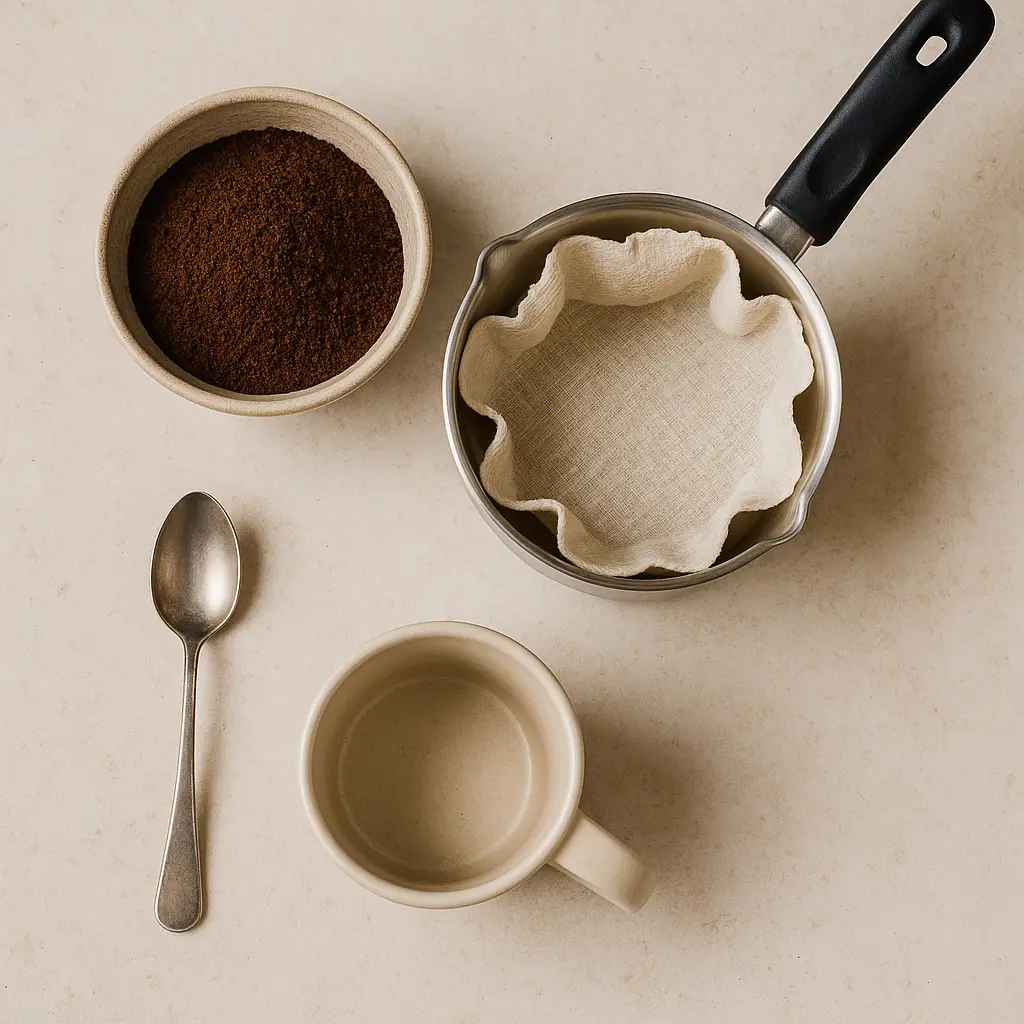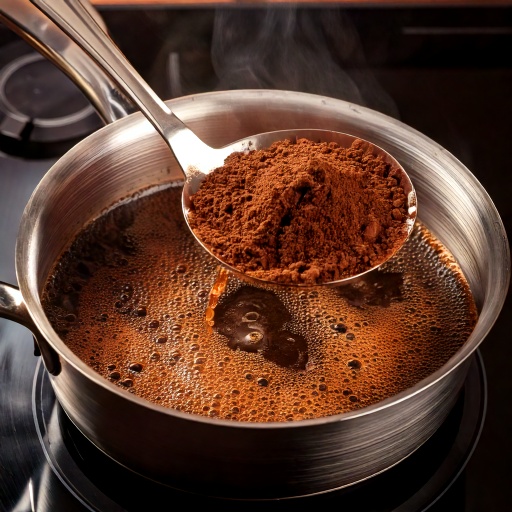Imagine waking up craving that first glorious sip of hot coffee—only to realize your coffee maker is broken or missing, or you’re off the grid somewhere, like a campsite or a hotel room with zero appliances. In moments like these, knowing how to make a solid cup of coffee without a machine isn’t just a skill—survival-mode barista knowledge.
The good news? It’s easier than you think. You don’t need a high-end machine with a dozen buttons to enjoy a strong, flavorful cup of joe. You can whip up a craft-worthy cup using little creativity, hot water, and your favorite coffee. This guide walks you through exactly how to do that—from stovetop brews to cowboy coffee and even smooth, no-heat cold brews.
The Essentials for Coffee Without a Coffee Maker
To get started, you’ll need two things: good ground coffee and clean water. The quality of both will shape your coffee’s flavor.
Recommendations: Go for medium or coarse-ground coffee, pre-ground, or freshly ground from whole beans. Filtered or bottled water is your best friend here, especially if tap water has a distinct taste. A bad cup often starts with bad water, so don’t overlook it.
Read Also Why Water Quality Matters in Coffee Brewing
Tools You'll Need
You don’t need fancy gear to brew great coffee. A saucepan is excellent for stovetop methods, but a microwave-safe mug or container can work in a pinch. Keep a spoon for stirring, a mug for sipping, and anything clean and porous for filtering—a mesh strainer, cheesecloth, paper towels, or even a clean dish towel. You don’t have to get fancy; just be creative.

The Saucepan Brew
The saucepan method is perfect for brewing homemade coffee without specialized equipment. It’s simple, accessible, and surprisingly tasty when done right. This approach mimics traditional drip brewing (only without the drip).
How to Brew Coffee with a Saucepan:
Add the desired amount of ground coffee to your saucepan. A good starting ratio is 1 to 2 tablespoons of coffee per cup of water.
Stir to ensure all the grounds are soaked.
Add water to the saucepan and set it on medium heat. Give the mixture a good stir.
Bring the mixture to a boil, lower the heat, and let it simmer for three to five minutes. Letting it simmer longer intensifies the flavor.
After simmering, use a strainer to separate the coffee grounds from the liquid. If you don't have a strainer, use a clean cloth or cheesecloth to filter out the coffee grounds.
Tips for Better Flavor
Do not boil the coffee for too long to enhance the flavor; this can over-extract it and make it bitter. Stirring the grounds while heating ensures a more even extraction of flavors. Additionally, consider adding a pinch of salt to reduce bitterness or flavoring it with cinnamon or cocoa powder for an extra twist.

Method 2: Cowboy Coffee
Cowboy coffee is the rough-and-ready brew of the wilderness, made with zero filters and maximum character. It’s perfect for camping, road trips, or any situation where simplicity rules.
How to Make Cowboy Coffee:
Bring water to a boil in a pot or kettle.
Remove the boiling water from the heat.
Add 1 to 2 tbsp. of ground coffee per cup of water into the pot.
Stir the grounds into the hot water thoroughly.
Stir the grounds into the water and let them steep for about 5 minutes. If you're outdoors, this is where you can enjoy the simplicity of campfire coffee.
Let the brew sit for a minute, settling the grounds at the bottom. Then, slowly pour the coffee into your cup, leaving the grounds behind in the pot.
You’ll get a deep, strong cup with a few rustic notes—and maybe a couple of floating grounds if you’re not careful.
You can use a cloth or a sock (clean, of course) as a makeshift filter. Simply place the coffee grounds inside the cloth, tie it, and submerge it in the boiling water for a more refined brew. This technique eliminates the need for a filter and makes the coffee cleaner while keeping the rustic feel.
Method 3: Using a Coffee Bag
The coffee bag method is ideal for minimal cleanup with maximum convenience. It’s similar to making tea, except you're working with coffee grounds instead of leaves. All you need is a standard coffee filter, some ground coffee, and a piece of kitchen string.—you can easily make your own at home.
How to Make a DIY Coffee Bag:
Place 1 to 2 tablespoons of ground coffee in the center of a coffee filter.
Fold the sides of the filter around the grounds and tie it securely with kitchen string, leaving a bit of extra string to hold onto.
Bring water to a boil and then reduce the heat slightly.
Place the coffee bag in your mug and pour hot water over it.
Let the coffee steep for about 5 minutes. Steep longer for a stronger flavor.
Remove the bag, gently squeeze it to release the last bit of goodness, and enjoy.

Method 4: Cold Brew Without Equipment.
If hot coffee isn’t your thing—or you’re in a place where boiling water isn’t an option, cold brew is the way to go. It’s smooth, less acidic than hot coffee, and perfect for sipping slowly over ice. Best of all, you don’t need any special equipment to make it.
Related: How to make Homemade Nitro Cold Brew
How to Make Cold Brew Coffee Without a Machine:
Combine one cup of coarse coffee grounds with four cups of cold or room-temperature water in a container.
Give it a light stir to ensure every bit of ground coffee is fully saturated.
Seal the container and let it sit for 12 to 18 hours at room temperature or in the fridge.
After steeping, strain the brew through a fine mesh strainer or cheesecloth into another container.
Serve your cold brew over ice, or dilute it with water or milk if it's too strong.
The longer it steeps, the more flavor it has. Once made, store your cold brew in the fridge for up to a week.

Final Thoughts
Making coffee without a coffee maker may seem daunting, but as you can see, there are plenty of creative ways to brew a great cup with just the basics. Whether you prefer the smooth strength of saucepan brewing or the bold kick of cowboy coffee, the convenience of a DIY coffee bag, or the cool vibe of a homemade cold brew, each method has its charm.
So, the next time you’re without a coffee maker, don’t stress it. Use these simple methods to brew like a pro—anytime, anywhere.
For the best results, start with ethically sourced beans from Solai Coffee.
How to Make Coffee Without a Coffee Maker